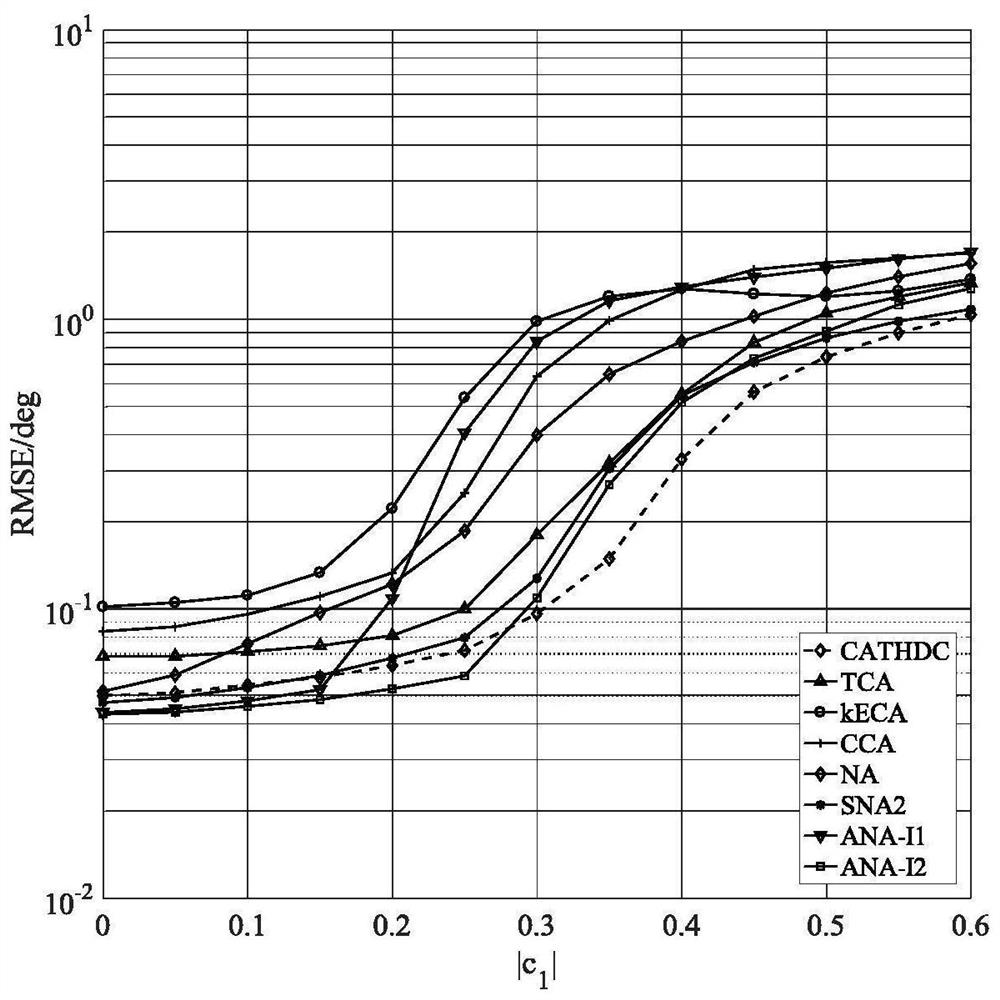A Double Hole Coprime Array Antenna Structure
An array antenna and antenna structure technology, applied in the field of dual-hole coprime array antenna structure, can solve problems such as loss of degrees of freedom, reduce the number of antenna elements, improve angle estimation performance and spatial resolution, and have flexible and simple antenna layouts. Effect
- Summary
- Abstract
- Description
- Claims
- Application Information
AI Technical Summary
Problems solved by technology
Method used
Image
Examples
Embodiment Construction
[0022] The present invention is described in further detail now in conjunction with accompanying drawing.
[0023] The invention discloses a Coprime array with a two-hole difference co-array (CATHDC) antenna structure. The structure is composed of four sparse sub-arrays, the total number of array elements is T, and the number of antennas is N, and M, wherein N and M=3 are coprime integers, M in and d≤λ / 2 is the unit array element spacing, λ is the carrier wavelength,
[0024] Table 1 shows the parameters of the relevant sparse array structure required by this patent, including array layout, continuous DOF (uDOF), weight function w(1), w(2), w(3) and coupling rate, where TCA represents de Redundant coprime array (thinned coprime array), kECA is k-time extended coprime array (k-time extended coprime array), CCA is complementary coprime array (complementary coprime array), NA is two-level nested array (nested array) ), SNA2 is a 2-order super nested array (2-order sup...
PUM
 Login to View More
Login to View More Abstract
Description
Claims
Application Information
 Login to View More
Login to View More - R&D
- Intellectual Property
- Life Sciences
- Materials
- Tech Scout
- Unparalleled Data Quality
- Higher Quality Content
- 60% Fewer Hallucinations
Browse by: Latest US Patents, China's latest patents, Technical Efficacy Thesaurus, Application Domain, Technology Topic, Popular Technical Reports.
© 2025 PatSnap. All rights reserved.Legal|Privacy policy|Modern Slavery Act Transparency Statement|Sitemap|About US| Contact US: help@patsnap.com



